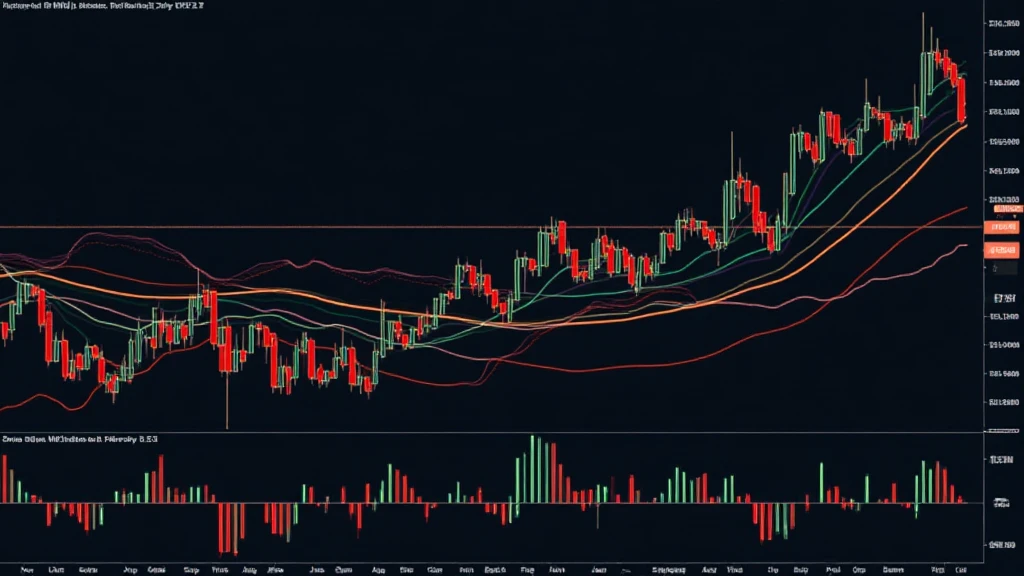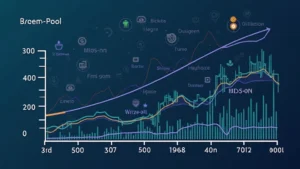Bitcoin Price Chart Analysis: Unveiling Market Trends
Are you ready to dive into the world of Bitcoin? With over $4.1 billion lost to DeFi hacks in 2024, understanding the Bitcoin price chart is more critical than ever for making informed investment decisions. In this article, we will explore the Bitcoin price chart analysis and how it can help you navigate the volatile cryptocurrency market.
Understanding Bitcoin Price Charts
Bitcoin price charts are graphical representations of the cryptocurrency’s price movements over a specific timeframe. They allow investors to see historical price trends, identify potential support and resistance levels, and make predictions about future movements.
Like a bank vault for your digital assets, understanding these charts can provide security in your investment decisions. The fundamental tools used in Bitcoin price chart analysis include:

- Line Charts
- Bar Charts
- Candlestick Charts
Line Charts
Line charts are the simplest form of price charts. They connect closing prices over a specific period, providing a clear view of the price trend. These charts are particularly useful for quickly identifying the overall direction of market movements.
Bar Charts
Bar charts display opening, closing, high, and low prices for each time period. This additional insight into price movement helps traders assess market volatility and make better-informed decisions.
Candlestick Charts
Candlestick charts are complex but incredibly informative. Each candlestick represents a specific time period and shows the open, close, high, and low prices. The body of the candle indicates the price movement, while the wicks show price extremes for that period. Candlestick patterns can reveal market sentiment.
Key Technical Analysis Indicators
In addition to price charts, various technical analysis indicators can enhance your Bitcoin price chart analysis. Here are three essential indicators you should be familiar with:
- Moving Averages: They smooth out price data to identify trends over time. A common approach is using the 50-day and 200-day moving averages.
- Relative Strength Index (RSI): The RSI measures the speed and change of price movements, helping to identify overbought or oversold conditions. An RSI above 70 may indicate overbought conditions, while an RSI below 30 may indicate oversold conditions.
- MACD (Moving Average Convergence Divergence): This indicator shows the relationship between two moving averages of a security’s price and helps identify potential buy or sell signals.
Analyzing Bitcoin Historical Data
To effectively analyze Bitcoin price charts, you must examine historical data. Bitcoin’s price fluctuations can be attributed to various factors, including market demand, investor sentiment, and major news events.
For instance, let’s look at the price movements during 2025:
| Date | Price (USD) | Event |
|---|---|---|
| January 1, 2025 | $50,000 | Yearly Trading Surges |
| March 15, 2025 | $45,000 | Market Correction |
| June 30, 2025 | $55,000 | Institutional Investments |
| September 1, 2025 | $60,000 | Regulatory Clarity Announcement |
As you can see from the data above, analyzing significant events alongside price movements enhances your understanding of the Bitcoin market dynamics.
2025 Altcoin Predictions
With the Bitcoin price action being chaotic, many investors are exploring altcoins. If you’re curious about 2025’s most promising altcoins, keep an eye on the following cryptocurrencies that analysts are excited about:
- Ethereum 2.0
- Cardano (ADA)
- Solana (SOL)
These altcoins have been gaining traction in the market and could provide profitable opportunities.
Conclusion: Applying What You’ve Learned
In a world where cryptocurrency is defined by fluctuations and volatility, understanding Bitcoin price chart analysis is key for investors. With historical data, technical indicators, and proper market analysis, you can navigate the complexities of the Bitcoin market.
As you explore the Bitcoin price chart analysis, remember that investing carries risks. Always consult with local regulators or cryptocurrency experts.
Not financial advice; conduct thorough research.
For a deeper understanding of cryptocurrency and blockchain technology, visit hibt.com.
This article was written by Dr. Alex Trent, a renowned blockchain analyst with over 15 published research papers and expertise in cryptocurrency auditing.











